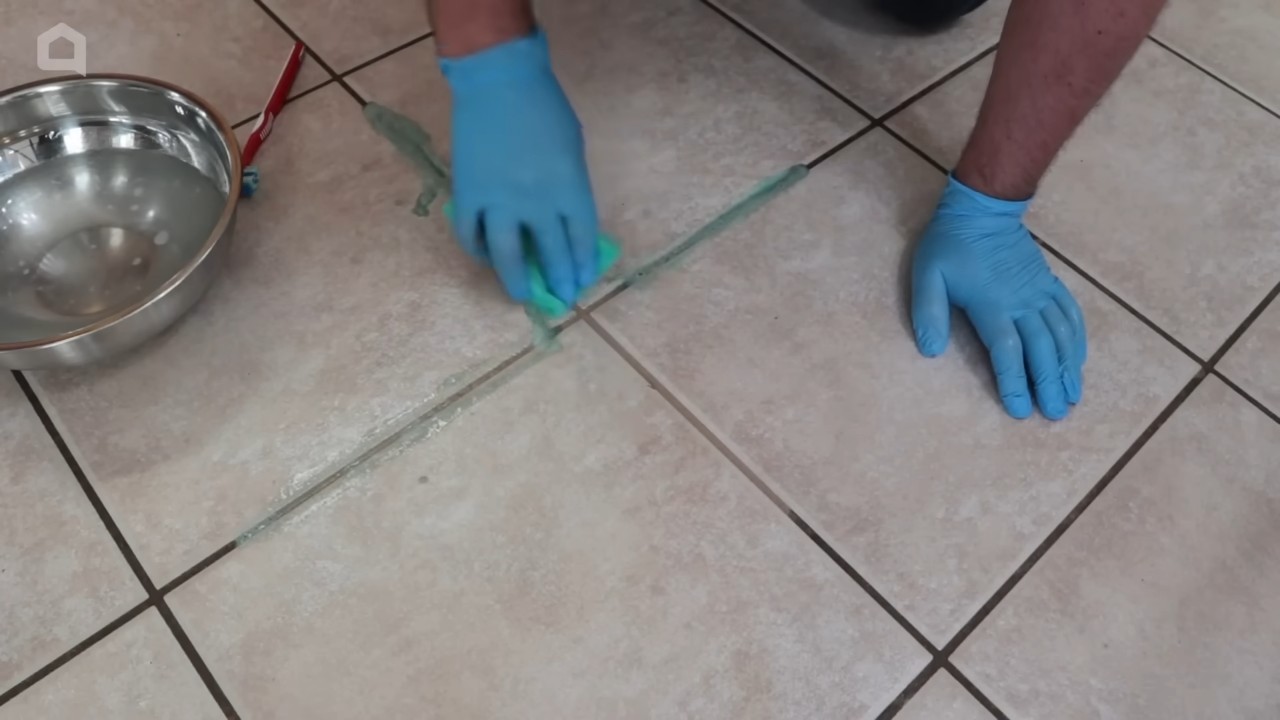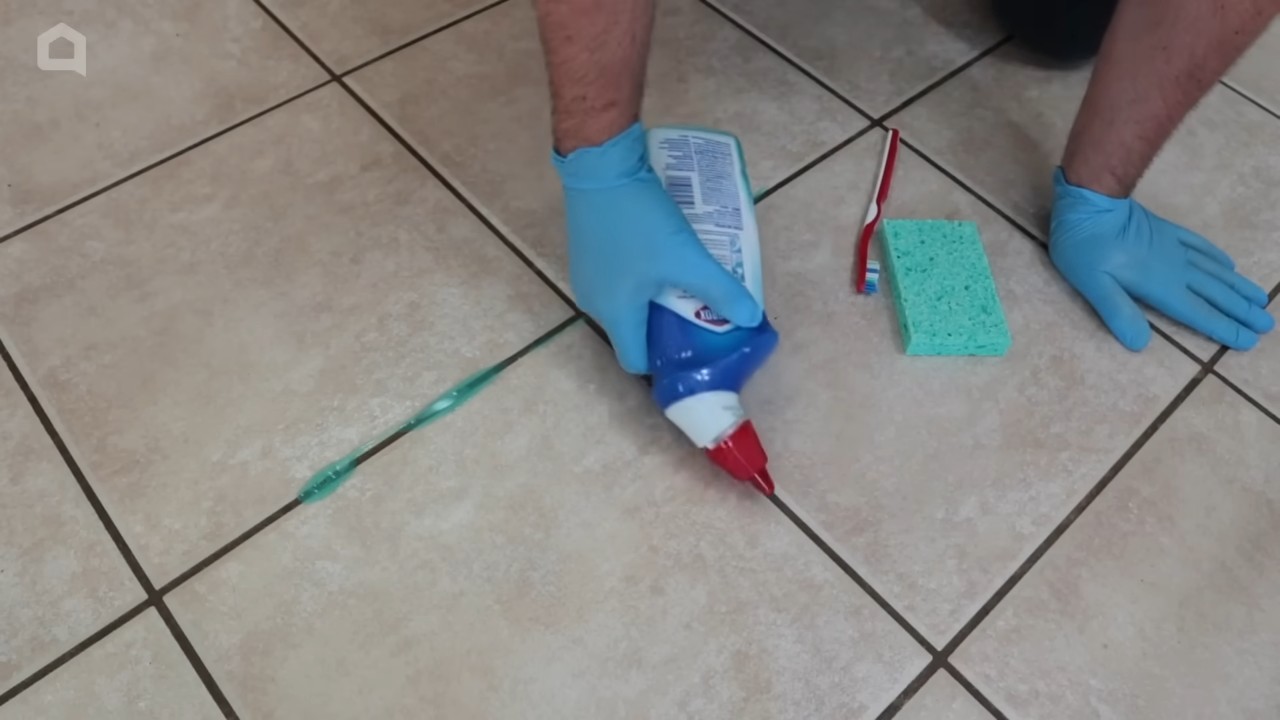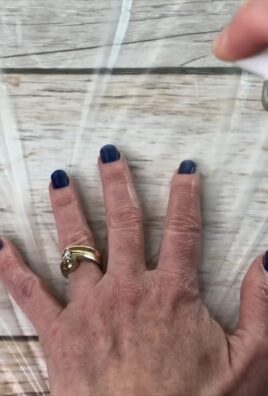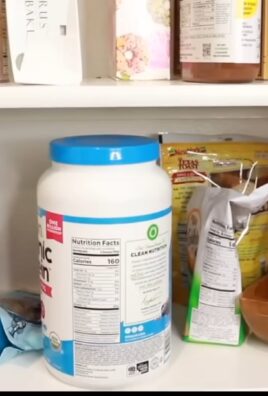Toothpaste uses besides teeth – bet you didn’t know your trusty tube of minty freshness could be your new best friend around the house! We often think of toothpaste solely for oral hygiene, but its mild abrasive and cleaning properties make it a surprisingly versatile tool for tackling a whole host of household challenges. From removing stubborn stains to polishing silverware, this humble paste has a history of surprising applications beyond the bathroom sink.
For generations, resourceful individuals have discovered and shared these clever hacks, passing down tips and tricks that utilize everyday items in unexpected ways. Think of it as a secret weapon against life’s little messes! In a world where we’re all looking for ways to save time and money, these DIY solutions are more relevant than ever.
Why spend a fortune on specialized cleaning products when you likely already have a tube of toothpaste tucked away? I’m excited to share some of my favorite and most effective toothpaste uses besides teeth. These simple hacks will not only save you money but also reduce the number of harsh chemicals you bring into your home. So, grab your toothpaste, and let’s get started on transforming your cleaning routine!

Beyond the Brush: Unexpected Uses for Toothpaste Around Your Home
Okay, let’s be honest, we all know toothpaste is for keeping our pearly whites, well, pearly white. But did you know that humble tube of minty freshness is actually a secret weapon for tackling all sorts of household problems? I’m talking beyond just brushing! I’ve been experimenting with toothpaste hacks for years, and I’m constantly amazed by its versatility. So, ditch the harsh chemicals and grab your toothpaste – let’s dive into some surprising and effective uses!
Cleaning and Polishing Powerhouse
Toothpaste’s mild abrasiveness makes it perfect for cleaning and polishing various surfaces. Just remember to use a non-gel toothpaste for these applications, as the gel formulas tend to be less effective.
Silverware Savior
Tarnished silverware looking dull? Don’t despair! Toothpaste can bring back its shine with minimal effort.
* What you’ll need: Non-gel toothpaste, a soft cloth, warm water.
* Why it works: The mild abrasives in toothpaste gently remove tarnish without scratching the silver.
Step-by-step instructions:
1. Apply a small amount of toothpaste to a soft cloth.
2. Gently rub the toothpaste onto the tarnished silverware, focusing on the areas with the most discoloration.
3. Rinse the silverware thoroughly with warm water.
4. Dry the silverware completely with a clean, soft cloth.
5. Admire your sparkling silverware! You’ll be amazed at the difference.
Jewelry Reviver (Except Pearls!)
Got some costume jewelry or even gold and silver pieces that have lost their luster? Toothpaste can help! But a HUGE word of caution: DO NOT use toothpaste on pearls or delicate gemstones. The abrasives can damage their surface.
* What you’ll need: Non-gel toothpaste, a soft toothbrush (an old one is perfect!), warm water.
* Why it works: Toothpaste gently removes dirt and grime that dulls the shine of jewelry.
Step-by-step instructions:
1. Apply a small amount of toothpaste to the soft toothbrush.
2. Gently scrub the jewelry, paying attention to any crevices or hard-to-reach areas.
3. Rinse the jewelry thoroughly with warm water.
4. Dry the jewelry completely with a clean, soft cloth.
5. Your jewelry should be looking much brighter!
Chrome Cleaner Extraordinaire
Chrome fixtures in your bathroom or kitchen looking a little grimy? Toothpaste to the rescue!
* What you’ll need: Non-gel toothpaste, a soft cloth or sponge, warm water.
* Why it works: Toothpaste effectively removes water spots, soap scum, and other grime from chrome surfaces.
Step-by-step instructions:
1. Apply a small amount of toothpaste to a soft cloth or sponge.
2. Rub the toothpaste onto the chrome fixtures, focusing on areas with water spots or grime.
3. Rinse the fixtures thoroughly with warm water.
4. Dry the fixtures completely with a clean, soft cloth.
5. Enjoy your sparkling chrome!
Shoe Scuff Eraser
Those pesky scuff marks on your leather or rubber shoes driving you crazy? Toothpaste can help minimize their appearance.
* What you’ll need: Non-gel toothpaste, a soft cloth, warm water.
* Why it works: The mild abrasives in toothpaste gently buff away the scuff marks.
Step-by-step instructions:
1. Apply a small amount of toothpaste to a soft cloth.
2. Gently rub the toothpaste onto the scuff marks.
3. Wipe away the toothpaste with a damp cloth.
4. Dry the area with a clean, soft cloth.
5. Repeat if necessary. The scuff marks should be less noticeable.
Iron Cleaning Agent
Is your iron leaving marks on your clothes? It might be time to clean the soleplate.
* What you’ll need: Non-gel toothpaste, a soft cloth, warm water.
* Why it works: Toothpaste helps remove residue and buildup from the iron’s soleplate.
Step-by-step instructions:
1. Make sure your iron is unplugged and completely cool.
2. Apply a small amount of toothpaste to a soft cloth.
3. Gently rub the toothpaste onto the soleplate of the iron, focusing on areas with residue.
4. Wipe away the toothpaste with a damp cloth.
5. Dry the soleplate with a clean, soft cloth.
6. Plug in the iron and test it on an old cloth before using it on your good clothes.
Stain Removal Superstar
Toothpaste isn’t just for cleaning surfaces; it can also be surprisingly effective at removing certain types of stains.
Ink Stain Remover
Accidentally got ink on your clothes? Don’t panic! Toothpaste might be able to help.
* What you’ll need: Non-gel toothpaste, a soft cloth, cold water.
* Why it works: Toothpaste can help lift the ink stain from the fabric.
Step-by-step instructions:
1. Apply a generous amount of toothpaste to the ink stain.
2. Gently rub the toothpaste into the stain with a soft cloth.
3. Let the toothpaste sit on the stain for about 10-15 minutes.
4. Rinse the area with cold water.
5. Repeat if necessary.
6. Launder the garment as usual.
Lipstick Stain Lifter
Lipstick stains on clothes or fabric can be a real pain. Try this toothpaste trick!
* What you’ll need: Non-gel toothpaste, a soft cloth, cold water.
* Why it works: Toothpaste helps break down the oils and pigments in lipstick, making it easier to remove.
Step-by-step instructions:
1. Apply a small amount of toothpaste to the lipstick stain.
2. Gently rub the toothpaste into the stain with a soft cloth.
3. Let the toothpaste sit on the stain for about 10 minutes.
4. Rinse the area with cold water.
5. Launder the garment as usual.
Crayon Marks on Walls
Kids and crayons… a classic combination that often leads to colorful walls. Toothpaste can help you reclaim your walls!
* What you’ll need: Non-gel toothpaste, a damp cloth.
* Why it works: The mild abrasives in toothpaste gently remove crayon marks without damaging the paint (test in an inconspicuous area first!).
Step-by-step instructions:
1. Apply a small amount of toothpaste to a damp cloth.
2. Gently rub the toothpaste onto the crayon marks.
3. Wipe away the toothpaste with a clean, damp cloth.
4. Repeat if necessary.
Beauty and Personal Care Secrets
Believe it or not, toothpaste can also be used for a few beauty and personal care tricks.
Pimple Treatment
This is probably the most well-known non-dental use for toothpaste. It’s a quick and easy way to dry out a pimple.
* What you’ll need: Non-gel toothpaste.
* Why it works: Toothpaste contains ingredients like baking soda and hydrogen peroxide, which can help dry out pimples and reduce inflammation.
Step-by-step instructions:
1. Before bed, apply a small dab of non-gel toothpaste directly onto the pimple.
2. Leave it on overnight.
3. In the morning, rinse your face with water.
4. Repeat as needed until the pimple is gone.
Important: Don’t use this on sensitive skin or for prolonged periods, as it can cause irritation.
Nail Cleaner and Whitener
Want brighter, cleaner nails? Toothpaste can help!
* What you’ll need: Non-gel toothpaste, a soft toothbrush.
* Why it works: Toothpaste helps remove stains and brighten the nails.
Step-by-step instructions:
1. Apply a small amount of toothpaste to a soft toothbrush.
2. Gently scrub your nails with the toothbrush.
3. Rinse your hands with water.
4. Your nails should look cleaner and brighter.
Temporary Relief for Minor Burns
This is a trick I learned from my grandmother! Toothpaste can provide temporary relief from minor burns.
* What you’ll need: Non-gel toothpaste, cold water.
* Why it works: The cooling sensation of toothpaste can help soothe the burn and reduce pain.
Step-by-step instructions:
1. Immediately run cold water over the burn for several minutes.
2. Apply a thin layer of non-gel toothpaste to the

Conclusion
So, there you have it! We’ve explored a world beyond pearly whites, uncovering the surprising versatility of toothpaste. From banishing blemishes to shining silverware, this humble tube holds a wealth of potential waiting to be unlocked. The sheer number of alternative uses for toothpaste makes it an incredibly handy item to have around the house.
Why is this DIY trick a must-try? Because it’s economical, readily available, and surprisingly effective. Instead of reaching for specialized cleaners or expensive solutions, you can often find the answer lurking in your bathroom cabinet. Think about the money you can save by using toothpaste to polish your chrome fixtures instead of buying a dedicated chrome cleaner. Or the convenience of quickly removing a stubborn stain from your clothing with a dab of toothpaste instead of running to the dry cleaner.
But the benefits extend beyond mere cost savings. Many commercial cleaners contain harsh chemicals that can be harmful to your health and the environment. By using toothpaste for these alternative applications, you’re opting for a gentler, often less toxic solution. Plus, you’re reducing your consumption of single-use plastic bottles and containers, contributing to a more sustainable lifestyle.
Ready to experiment? Here are a few suggestions and variations to get you started:
* For removing crayon marks from walls: Use a non-gel toothpaste and gently rub it onto the affected area with a damp cloth. Wipe clean with a fresh, damp cloth.
* For polishing jewelry: Apply a small amount of toothpaste to a soft cloth and gently rub your jewelry. Rinse thoroughly with water and dry with a clean cloth. Be cautious with delicate stones or pearls, as toothpaste can be abrasive.
* For cleaning sneakers: Use an old toothbrush to scrub toothpaste onto the rubber soles and sides of your sneakers. Wipe clean with a damp cloth.
* For defogging bathroom mirrors: Spread a thin layer of toothpaste on the mirror, let it sit for a minute or two, and then wipe it clean with a damp cloth.
* For soothing insect bites: Apply a small dab of toothpaste to the bite to help relieve itching and inflammation.
Remember to always test toothpaste on a small, inconspicuous area first, especially when using it on delicate surfaces or materials. And avoid using whitening toothpaste on colored items, as it may cause discoloration.
We’re confident that once you discover the power of toothpaste beyond oral hygiene, you’ll be amazed by its versatility. So, go ahead, grab that tube of toothpaste and start exploring! We encourage you to try these DIY tricks and share your experiences with us. What surprising uses for toothpaste have you discovered? Let us know in the comments below! We can’t wait to hear your stories and learn from your experiences. Your insights could help others unlock the full potential of this everyday essential. Embrace the unexpected and discover the magic of toothpaste!
Frequently Asked Questions
Is it safe to use any kind of toothpaste for these DIY tricks?
Not all toothpastes are created equal, and some are better suited for these alternative uses than others. Generally, a plain, non-gel toothpaste is the best option. Avoid using whitening toothpastes on colored surfaces, as they can sometimes cause discoloration. Also, be cautious when using toothpaste on delicate materials like pearls or certain metals, as the abrasive nature of some toothpastes can cause damage. Always test a small, inconspicuous area first to ensure that the toothpaste doesn’t cause any adverse effects. For example, if you’re cleaning silver, start with a small, hidden spot to see how the toothpaste reacts before applying it to the entire piece.
Can I use gel toothpaste for these tricks?
While gel toothpaste might work for some applications, it’s generally not the preferred choice. Gel toothpastes tend to be less abrasive than traditional paste toothpastes, which means they might not be as effective for tasks like polishing or removing stains. However, you can experiment and see if it works for your specific needs. For instance, you might find that gel toothpaste is sufficient for defogging a bathroom mirror, but not strong enough for cleaning sneakers.
Will toothpaste damage the surfaces I’m cleaning?
Toothpaste can be mildly abrasive, so there’s always a risk of scratching delicate surfaces. That’s why it’s crucial to test a small, hidden area first before applying toothpaste to the entire surface. Avoid using excessive pressure when rubbing, and always use a soft cloth or brush. If you’re unsure about whether toothpaste is safe for a particular surface, it’s best to err on the side of caution and use a product specifically designed for that purpose. For example, if you’re cleaning an antique piece of furniture, you might want to consult with a professional before using toothpaste.
How long should I leave the toothpaste on before wiping it off?
The amount of time you leave the toothpaste on depends on the specific application. For tasks like removing crayon marks or polishing jewelry, a minute or two is usually sufficient. For more stubborn stains or grime, you might need to leave the toothpaste on for a slightly longer period, but no more than 5-10 minutes. Always monitor the area closely and wipe off the toothpaste as soon as you see the desired effect. Leaving the toothpaste on for too long can potentially damage the surface.
What’s the best way to remove toothpaste residue?
The best way to remove toothpaste residue is to use a clean, damp cloth. Wipe the area thoroughly until all traces of toothpaste are gone. You might need to rinse the cloth several times to ensure that all the residue is removed. For hard-to-reach areas, you can use a cotton swab or a soft-bristled brush. After wiping, dry the area with a clean, dry cloth to prevent water spots.
Can I use toothpaste to remove stains from clothing?
Yes, toothpaste can be effective for removing certain types of stains from clothing, especially oily or greasy stains. However, it’s important to act quickly and treat the stain as soon as possible. Apply a small amount of non-gel toothpaste to the stain and gently rub it in with your fingers or a soft cloth. Let it sit for a few minutes, then rinse thoroughly with cold water. If the stain persists, repeat the process or try using a stain remover specifically designed for clothing. Always test the toothpaste on a hidden area of the fabric first to ensure that it doesn’t cause any discoloration.
Is there anything I shouldn’t use toothpaste on?
There are certain materials and surfaces that you should avoid using toothpaste on. These include:
* Pearls: Toothpaste can scratch the delicate surface of pearls.
* Soft metals: Gold and silver can be scratched by abrasive toothpastes.
* Leather: Toothpaste can dry out and damage leather.
* Certain plastics: Some plastics can be discolored or damaged by toothpaste.
* Painted surfaces: Toothpaste can dull or scratch painted surfaces.
Always err on the side of caution and test a small, inconspicuous area first before using toothpaste on any surface you’re unsure about.



Leave a Comment